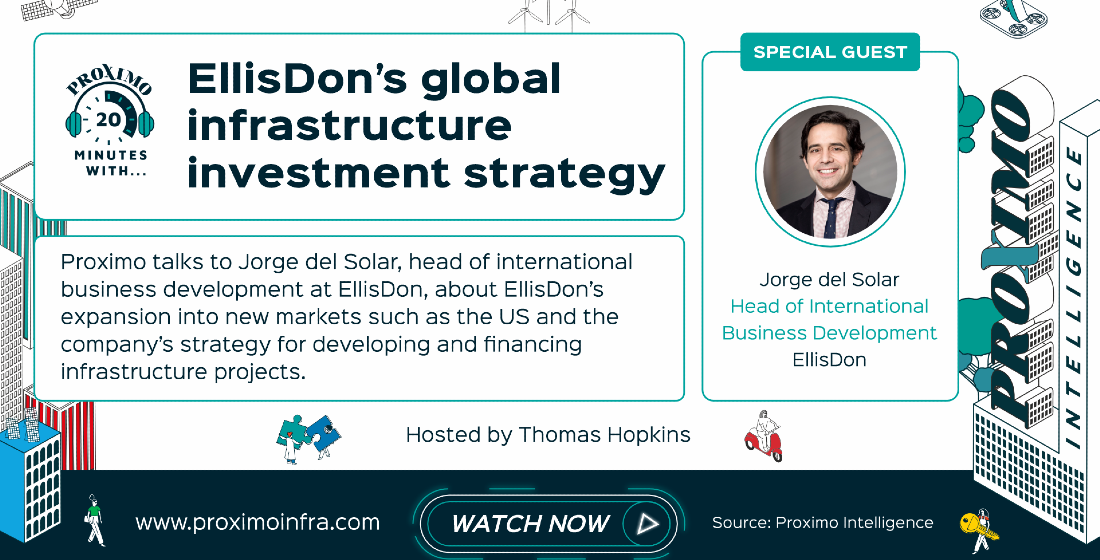Proximo Europe: Top takeaways
Proximo Europe 2022 Infrastructure & Renewables Finance took place in Lisbon, Portugal, on June 8-9. The event hosted over 250 attendees from 140 companies and institutions and marked a welcome return to live debate on a range of key topics affecting renewables and infrastructure development and financing. Here are some of the key takeaways from the event.

First, our thanks to the many sponsors that partnered with us to facilitate the event and all the speakers that were both giving of their time and expertise. As with any event, debate spawned in the headline sessions found its way into conversations over coffee, dinners and side meetings. What follows are conclusions drawn from on- and off-the-record reporting across the entire event.
Debt pricing is likely to rise
There is still uncertainty about a timeline when it comes to a debt pricing correction, but there is a general consensus that it is inevitable.
The consequences of the war in Ukraine and the shift to a lower-growth, higher-inflation environment affect almost every aspect of economic activity and financing conditions. This includes amplified concerns over the possibility of corrections in both financial and tangible asset markets.
The ECB warned in its May 2022 Financial Stability Review that while investment funds saw manageable outflows following the invasion, euro area non-banks remain vulnerable to a further market correction, given high duration, credit and liquidity risk.
Further shocks in construction costs are very possible
Demand for labour in Europe is at an all-time high. Data from Lee Hardman Currency Analyst, MUFG- European Macro Overview keynote speech stated that there are 0.46 vacancies for every unemployed person in Europe currently, an all-time high. A very liquid job market coupled with higher wage growth driven by higher inflation, will likely lead to rising construction costs.
According to Hardman’s presentation inflation is expected to peak out by Autumn at around 9% before falling back down. Inflation will fall but slowly, higher wages therefore look set to stay for the upcoming year at least.
Further regulatory clarity is still needed
Investors more than ever require the reassurance of defined and transparent regulatory frameworks in the energy sector. This is particularly important in emerging sectors such as battery storage, hydrogen, and hybrid projects, which will not accelerate at the pace required to meet demand until regulation is settled.
Europe has a need for battery storage, the UK is currently leading the market and it is thought that Iberia will become a critical region for storage, but mass production cannot be reached until regulation is formulated and implemented. At present there are limited revenue sources for storage, a defined structure is needed to secure financing and there is also potential for government subsidies.
Policy support and clarity for LNG import and gas storage infrastructure are also necessary if the European midstream oil and gas market is to take off.
More engineers are needed in banking
New emerging technologies have increased the need for banks to have in-house expertise to understand and price technology risk. Banks have plans to increase training across the board for new technology assets.
Hiring is also proving a challenge. With such a liquid job market there has been a lot of movement between institutions, particularly in the junior levels as graduates have the option of choosing between multiple roles.
There is an overarching concurrence that banks must become experts on the assets they deal with in order to secure investor trust.
DFIs and ECAs are positioned to support a European hydrogen market
Developers have been focusing on small scale projects across Europe, and funding them internally while they learn more about hydrogen’s technical and economic challenges. But ECAs will play a catalytic role in hydrogen given the volumes of public and private capital streaming into the sector. There is confidence that there will be a green hydrogen pricing.
Banks are looking at funding hydrogen projects in Europe. While large scale projects to date have been based in the Middle East and Asia, there are big projects such as H2 Green Steel’s planned facility in Boden, Sweden, emerging in Europe that need funding.
There is also a lot of interest in hybrid facilities, grouping hydrogen, storage, and offshore wind projects. Sponsors are keen to facilitate hybrid projects as they meet consumer demand, but lender concern lies in capture, as this will likely be the preferred technology but it is not yet evolved for hybrid projects. A need for regulatory reassurance is also cited by lenders as a primary concern.
Lenders will need to gain good insights into consumer behaviour
The wider energy market is increasingly becoming driven by consumer behaviour. The financial performance of a range of infrastructure-like assets, from rooftop solar to smart meters to student housing to EV infrastructure, will depend on consumer choices. Lenders have acquired expertise like this in the past - particularly in toll roads - and will need to do it again.
Consumers are more conscious than ever about their own carbon footprints and how the energy and infrastructure they interact with influences this. The rise in energy prices for consumers is forcing people to re-think where their energy comes from. As a result, consumers are becoming ‘prosumers’, taking proactive steps to know more about their utilities and where their electricity comes from. This growing consumer consciousness demands a build out in digital infrastructure assets such as smart meters and means by which consumers can monitor their energy consumption.
Digital infrastructure offers good ticket sizes and yields to lenders
Yields have picked up on fiber deals, particularly in Europe. Digital infrastructure will see a large non-recourse debt deal flow going forward, in both data centers and greenfield fiber financings.
The Covid-19 pandemic has underlined the importance of fast and reliable fibre connectivity. As more and more consumers adopt flexible working patterns and working from home, they require increased data and better coverage which, combined with the rollout of 5G and a focus on smart cities, demands wide scale availability of fibre connectivity.
Some of Europe’s largest and most prosperous economies are still under-served and government support is on offer in the more remote geographies.





